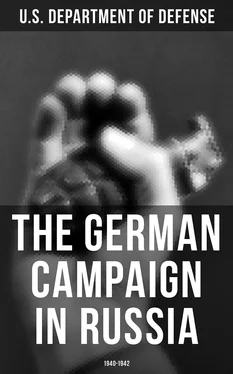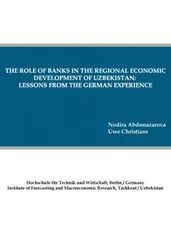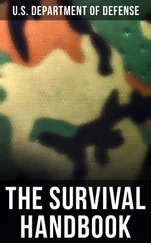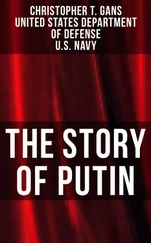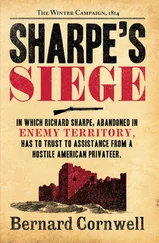While these demarches were being carried on, the Army prepared its preliminary plan on the basis of previous staff and concurrent General Staff exercises. On 5 December Brauchitsch and Halder presented their plan to Hitler at a conference during which the preparations for various future operations were examined. [See DA Pam No. 20-260, The German Campaigns in the Balkans (Spring 1941), Map 2.] In his verbal report, Halder first explained the topographical features of the Russian theater and mentioned that the most important industrial centers were in the Ukraine, in Moscow, and around Leningrad. The Pripyat Marshes divided the theater into a northern and a southern part. The roads in the latter were poor; the best rail and road net was to be found in the region between Warsaw and Moscow. The northern part of the theater was therefore more favorable for large-scale maneuvers than the southern. (For this reason the Russians were apparently concentrating more troops in the northern regions than in the south. Another remarkable feature in their distribution of forces was the massing of forces in the vicinity of areas in which Soviet and German spheres of interest overlapped. [See map 3 .]
The course of the Dnepr and Dvina would be the easternmost limits to which the Russians could withdraw without exposing their industrial centers. German armored wedges would have to drive through the Russian lines and break up the enemy defense system west of these rivers. A particularly strong attack force would have to be assembled for the thrust from the Warsaw area toward Moscow.
Three army groups were to launch the offensive: Army Group North was to thrust from East Prussia toward Leningrad, Army Group Center via Minsk toward Smolensk, and Army Group South toward Kiev. The third drive was to be executed by two armies jumping off from the Lublin and Jaroslav areas respectively, and by a third army thrusting from Moldavia toward the lower course of the Dnepr. The objective of the entire offensive was to reach the course of the Volga and the region around Archangel. The total assault force was to consist of 105 infantry and 32 armored and motorized infantry divisions, strong elements of which were to form the second wave.
Hitler agreed with Halder's plan and added that it was of the utmost importance to prevent the Russians from making a planned withdrawal. The Soviet military potential had to be eliminated and its regeneration made impossible. In planning the initial distribution of forces, every effort would have to be made to destroy the maximum number of Russian units near the border. For this purpose the armored and motorized divisions of the two army groups operating in the northern part of the theater would have to be committed on their adjoining wings. In the north, the enemy forces stationed in the Baltic States would have to be enveloped and cut off. Army Group Center would therefore have to be so strong that it could divert considerable forces northward to assist Army Group North if necessary. Army Group South would jump off later than the other two, with some elements advancing from Romania, while the main force, thrusting southeastward, was to envelop the enemy forces in the Ukraine. Finally, Hitler indicated that Romania and Finland would participate in the operation. A secondary attack in the far north was to be launched by three German divisions.
The Fuehrer did not consider the capture of Moscow as particularly important. He therefore did not want to commit himself whether the destruction of the bulk of the Russian forces in the northern and southern pockets was to be immediately followed by an advance toward and beyond Moscow. He also believed that 130-140 divisions would suffice for bringing the Russian campaign to a successful conclusion.
Upon resuming his report Halder pointed out that according to the most recent data the assembly would take 8 weeks and that the German preparations could not be concealed from the enemy after the beginning or the middle of April at the latest.
General Staff and Command Post Exercises
(November-December 1940)
Table of Contents
The preliminary plan was tested in a General Staff exercise conducted by the Assistant Chief of Staff, Operations, General Paulus. General Staff officers responsible for the drafting of the plan acted as group leaders. Paulus divided the exercise into three phases: the first began 29 November with the invasion and the initial battles near the border; the second, beginning 3 December, continued the offensive operations to the line Kiev — Minsk — Lake Peipus; and the last, staged 7 December, dealt with reaching the potential objectives beyond this line.
After each phase Paulus indicated the premises for the start of the next part of the exercise by explaining the phase line that had been reached, the condition of the troops, the supply situation, intelligence estimate, etc. All participants thus based their ideas on the same data. During the third phase of the game it became evident that the German ground forces would hardly be sufficiently strong to fan out across the funnel-shaped Russian theater if — contrary to the generally prevailing opinion — the Red Army was capable of offering continued resistance. Paulus reported the results and the lessons learned to Halder.
Generalmajor (Brig. Gen.) Eduard Wagner, Chief, Supply and Administration Division, prepared logistical exercises, which were to take place in December and January. Wagner also worked on a logistical plan that was to serve as a counterpart to the strategic survey prepared by the Operations Division. Special emphasis was placed on establishing an efficient supply system in the assembly areas and drawing up a sound base-development plan to guarantee the flow of supplies during the execution of far-reaching operations in the Russian theater.
Concurrent with, but independent of, these exercises the chiefs of staff of the three army groups were asked to work on problems involved in a campaign against Russia. They were briefed by Halder who limited the scope of their investigations to defeating the Russian forces in White Russia and the western Ukraine. Paulus provided them with all the necessary data, and each officer was instructed to arrive at a solution without consulting his fellow workers. The studies submitted at the beginning of December 1940 were carefully scrutinized by both Halder and Paulus. Ideas that were at great variance with those submitted in the preliminary plan were selected as topics of discussion for a conference of all chiefs of staff of army groups and armies which took place at Army High Command Headquarters on 13 and 14 December 1940. The discussions served to clarify a number of problems for which no solution had been found during the various exercises. It was also concluded that the Soviet Union would be defeated in a campaign not exceeding 8-10 weeks' duration.
Table of Contents
In November 1940 Reichs Marshal Hermann Goering ordered General der Infanterie (Lt. Gen.) Georg Thomas, Chief, Armed Forces Economic Office, to study the economic implications of a campaign against the Soviet Union. In the summary of his report Thomas arrived at the following conclusions:
a. During the initial months of an operation which would lead to the occupation of European Russia excluding the Urals, Germany would improve its food and raw material position, if the destruction of Soviet supplies could be prevented, if the Caucasus oil region was seized intact, and if the transportation problem was solved.
b. In the event that hostilities should continue for some time, Germany would benefit only if the transportation problem was solved and the civilian population induced to remain and cooperate. More specifically:
(1) The destruction of mechanized equipment would have to be prevented and the production of new farm machinery would have to be resumed without delay. Supplies of petroleum, oil, and lubricants (POL) would have to be allocated to agriculture.
Читать дальше
